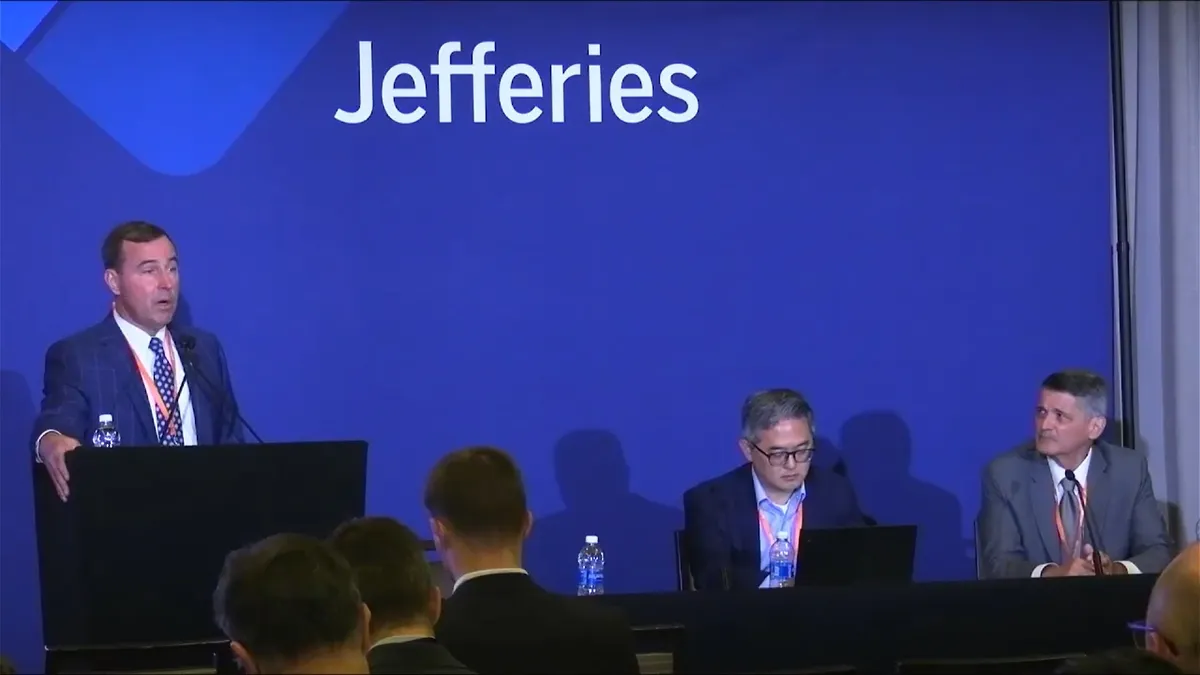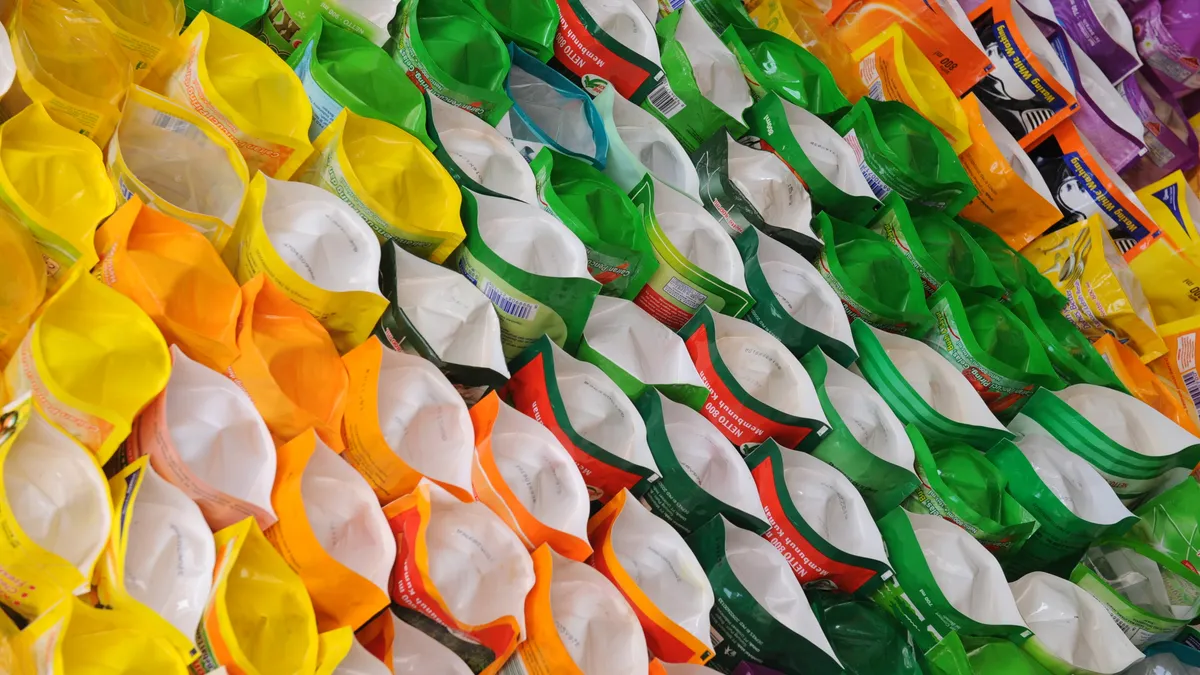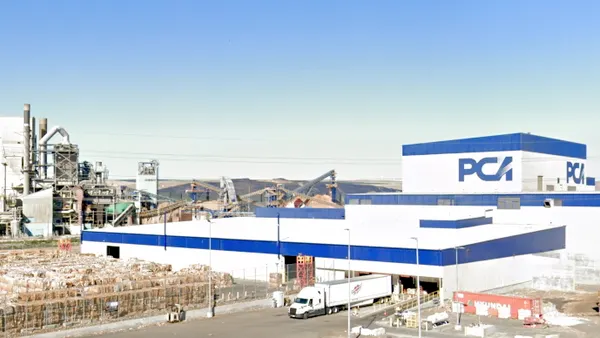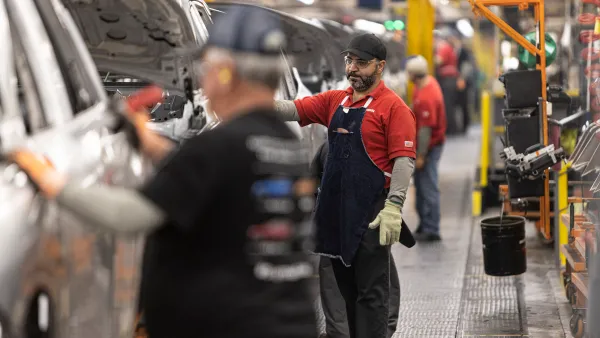During the seven years of transformation since Graphic Packaging International acquired International Paper’s consumer packaging business, the company has worked to become the king of cups — an ongoing growth driver for GPI. The company didn’t have a food service business segment prior to that 2018 deal, but has since become “the number one player in paper cups” and manufactures about 30% of North America’s supply, said CEO Mike Doss during a presentation at the Jefferies Industrials Conference on Wednesday.
As GPI has leaned into the paper cups sector, it was instrumental in getting the Recycled Materials Association to add paper cups to its materials specifications list this year to boost recycling acceptance. The company also has helped customers develop various paper cup solutions as alternatives to plastic, including at restaurant chains Chick-fil-A and McDonald’s, and in the CPG space, for Nissin Cup Noodles.
Despite customers’ economic challenges in key markets such as food service the last several quarters, “the last two years, our business has been up pretty substantially. And the reason for that is we’ve been replacing plastic and foam, in terms of cups,” Doss said.
The third quarter of 2025 has gotten off to “a mediocre start” despite this typically being a strong time of year, he said. Volumes were down about 2% year over year through mid-August.
He said three main factors are currently impacting GPI’s performance:
- Food is expensive: Cost-strained consumers have pulled back on spending. Affordability has been a problem “a little longer than I anticipated it would,” Doss said, so GPI “being able to shift and move with the consumer is essential.” In response to changing consumer habits, GPI’s customers are repositioning their businesses, Doss said, “but reformulation doesn’t happen overnight.”
- The MAHA movement and GLP-1 drugs: The federal government’s Make America Healthy Again initiative is “really somewhat expensive for our customers” because of requirements to change product formulations, such as removing certain dyes. “It comes at a very inopportune time for them. They're already dealing with some of their volumetric challenges, and now they're having to go to reformulations that almost always are more expensive,” Doss said. As far as impacts from GLP-1 medication use, “those actually are probably more of a friend for Graphic than a foe,” because it creates more business opportunities as food customers rework their products and packaging, he said.
- Paperboard conditions, specifically solid bleached sulfate: About 80% of GPI’s work is in recycled paperboard or unbleached paperboard, and it’s only a small player in SBS, Doss said. “But on the coated SBS market, there's been capacity added here in North America to a market that was already well supplied, and it's driving operating rates down pretty dramatically.” The extra capacity is “keeping a bit of a collar on our ability to push pricing on coated recycled paperboard and unbleached paperboard.”
Last year, numerous fiber producers expressed frustration with leading index Fastmarkets RISI for not fully recognizing their multiple price increases. In October 2024, Graphic Packaging International became the first to declare it would formally eliminate third-party pricing indexes as a factor in new sales contracts with paperboard customers, starting in 2025. At the Jefferies event Wednesday, Doss said GPI had been rather early in trying to move away from Fastmarkets RISI and had been doing so for the better part of six years; but the process takes time.
He said GPI “needs to be thoughtful” in how it makes the transition with customers, but “those who have made the move really like the transparency.”
“They've got the ability to sit at their Bloomberg terminal and really know what's going on with their pricing because it's very transparent in terms of how it goes, as opposed to the RISI process, which is far from transparent,” Doss said.
Executives said their new recycled paperboard mill in Waco, Texas — which they expect to consume up to 15 million cups per day as feedstock — remains on track to open next quarter. After that, they plan to close a recycled paperboard plant in East Angus, Quebec. That’s an update from GPI’s first-quarter earnings call on May 1, when executives discussed the possibility of shifting up the timeline for the East Angus closure due to trade uncertainty.
The decision to wait to close East Angus until the new Waco capacity comes online is important because “if we closed East Angus, we'd be shorting our customers right now,” said Mark Connelly, GPI senior vice president of investor strategy and development. “The market is tight in recycled. You don't see it in pricing right now because of what's going on in SBS, but the market is tight.”










